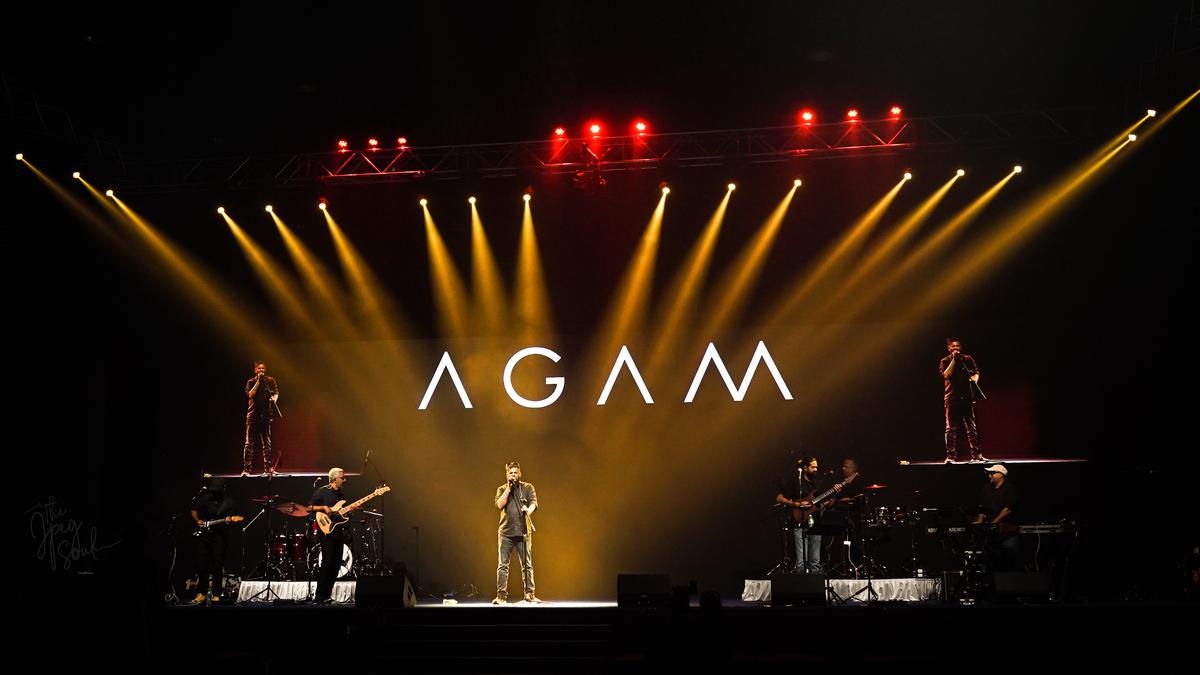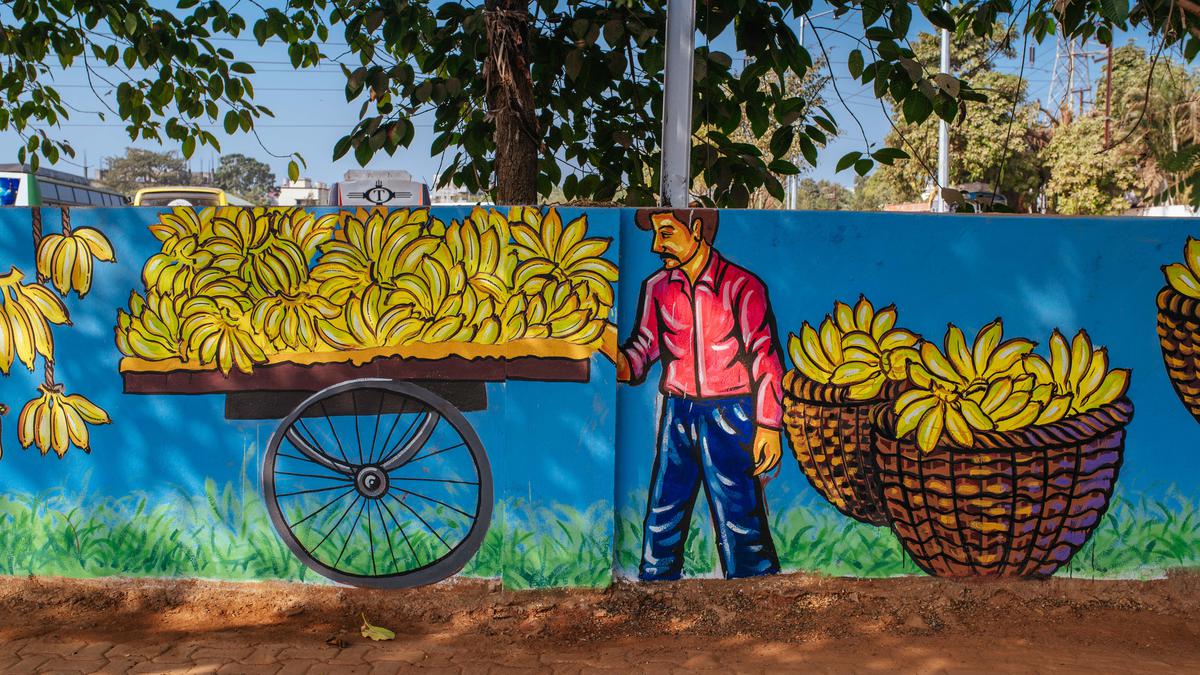“Look, she’s coming up,” someone said, and just like that, a group of us turned around to see a glorious full moon rise from the ramparts of Ahilya Fort.
We were seated on the fan-shaped ghats leading from the fort down to the river Narmada. For the last half hour, the young santoor exponent Satyendra Singh Solanki had been playing ‘Raag Bhoop’ on the stage erected against the backdrop of the river. The Sacred River Festival in Maheshwar, near Indore in Madhya Pradesh, was a collection of such moments rather than one grand spectacle — from the providence of a boat moving slowly behind the stage just as Satyendra’s brother Ramendra Singh Solanki’s tabla accompaniment picked up to the explosion of flavours in the saffron kheer served as part of the dinner thaali to guests staying at Ahilya Fort. From chancing upon Gajju, the heritage hotel’s resident florist at work, to the delicate calligraphy that announced that the salmon at lunch had been hand-carried by two long-time guests from Ireland.
Now in its 21st year, the festival celebrates the twin deities who define Maheshwar: the Narmada and Ahilyabai Holkar, the visionary 18th-century ruler who established Maheshwar as her capital. This year explored the theme of ‘Utpatti’, the Sanskrit word for genesis. Fittingly, all the six performances over the three-day festival were by musicians and dancers hailing from the state.
Conceived and hosted by the present-day custodian of the Holkar royal family, Richard Holkar, the festival is not a moveable feast. The river, the ghats, the battlements of the fort, the temples, and perhaps most of all the ancient elegance of the location, make for a unique historic and spiritual setting that is irreplaceable. Ahilyabai championed women’s empowerment, conservation and inclusivity — a focus on women’s education, the construction of dams, temples open to all castes — and this appears to inform the soul of the festival. As Richard explains, the objective has always been to give both artists and audiences an intimate and immersive setting distinct from the auditorium format.
Though it might baffle geographers, according to local legend, a line from the North Star to the Earth’s centre passes through Maheshwar, making it the ‘centre of the universe’. The Baneshwar temple, perched on a small island visible from the site of the performances, marks this spot. One has to believe Richard’s son Yeshwant Rao Holkar, managing partner at Ahilya Experiences, when he says there is an almost spiritual connection between the artist and the audience at this place.
The river flows both ways
The next morning, in a more intimate setting in the family’s personal courtyard within the fort, vocalist Dhani Gundecha spoke to audiences about her renowned family’s Dhrupad tradition. The oldest form of Indian classical music, used for chants in the Samaveda, it is considered inaccessible and rigid by many.
As someone who has recently returned to weekly Hindustani vocal lessons, I found it particularly illuminating to hear Gundecha speak about Dhrupad’s slow and deliberate expansion into a raag; and the challenges she faces as one of the few female exponents. Her accompanying musician, the pakhavaj exponent Dnyaneshwar Deshmukh, shared the legend of the instrument’s genesis: the sage Panini was drawn to the sound of rain falling on a lotus leaf and asked Vishwakarma, the divine architect, to recreate it.
The morning lecture demonstrations are not only a thoughtful way to warm up audiences for receiving the evening’s performances but also another avenue for the emerging artists to invite audiences into their practice. Anjana Rajan, the festival’s curator believes that it allows the musicians to delve into the finer nuances of their art. To see and hear the artists up close in the morning without electronic amplification, and to then see them perform under the open sky in the evening, is indeed a singular experience.
Historical notes
In classical geography, the Narmada is the dividing line between north and south India. But the Holkars and Rajan are both clear that this is not a festival of Hindustani music or Carnatic music but a festival of arts, covering both classical and folk, and an investigation of harmony.
Maheshwar’s history goes back to the protohistoric period (2,000 BC) and archaeological relics connect it to the Indus Valley civilisation. The historical city came under Mughal rule in 1601, when Akbar built the riverside fort as an important military base. Later, under Maratha rule, the Peshwa gave Maheshwar to his trusted general Mahesh Rao Holkar. It is his daughter-in-law Ahilyabai Holkar who is remembered today, among other things for building 28 ghats along the waterfront and reviving the dormant handloom industry in the late 18th century.
In many ways, Maheshwar carries a through line over history. Ahilyabai, for instance, constructed her fort on the existing Mughal fortifications. In the 1970s, her descendant Richard and his former wife Sally Holkar helped Maheshwar fight the power loom surge that had once again wiped out the handloom culture that produces the city’s trademark Maheshwar fabric.
I spent my last morning speaking to Amir Khan, the young sarod player from a long lineage of sarangi maestros. In his lecture demonstration, he had spoken about the difference in the quality of sound based on where the drum of the instrument is placed on the player’s knee. As a disciple of Ustad Rehmat Ali Khan from the Gwalior gharana, he rests the sarod closer to his knee; but a student from Ustad Alauddin Khan’s Maihar gharana, for instance, would be instructed to place it closer to their body.
For these young musicians from Madhya Pradesh, performing at a venue that holds such significance for the people of the state is significant. “The energy is unparalleled… the river is so beautiful and broad at this point,” says Gundecha, adding, “As a singer, you are aware of certain spaces that provoke you to sing. Maheshwar is one of those places.”
Marmalade and boat rides
Yeshwant shares that his philosophy of guiding this annual “heart-driven” production is something he’s imbibed from his father. “This is really a platform to achieve a particular vision and impact within a place that we love and we have 300 years of connection to,” he says, adding that he is keen to use the festival to showcase Maheshwar as a world-class example of responsible heritage tourism.
Many of the festival guests are regulars who stay in the heritage rooms at Ahilya Fort, but it is free and open to the local public. Attending the festival as a guest of Ahilya Fort is like being invited to the private world of the Holkars. You cannot order meals off a menu, for instance. Everybody dines together, on organic produce mostly grown on site, and the fruit preserves and marmalades at breakfast are “handmade by Prince Richard Holkar”.
If, like me, you are one who’d rather believe, do not miss the early morning boat ride to the temple at the ‘centre of the universe’. The festival mornings allow ample time to visit Ahilyabai’s private temple, witness the daily lingarchan puja, which has continued without break over the centuries, take a heritage walk of the fort complex, or visit REHWA to see the women weavers at work. At the not-for-profit foundation, I held a “fresh off the loom” sari that was resting on a table for a quality check before it went out to the store. It was still warm, like freshly baked roti. For me, the music at the festival carries that same temperature.
The Sacred River Festival was held between February 22-25 in Maheshwar. To plan your trip for the next edition or to visit through the year, visit ahilyafort.com
The writer is a Mumbai-based arts journalist and editor. Her debut novel ‘The Illuminated’ was published in 2021.





